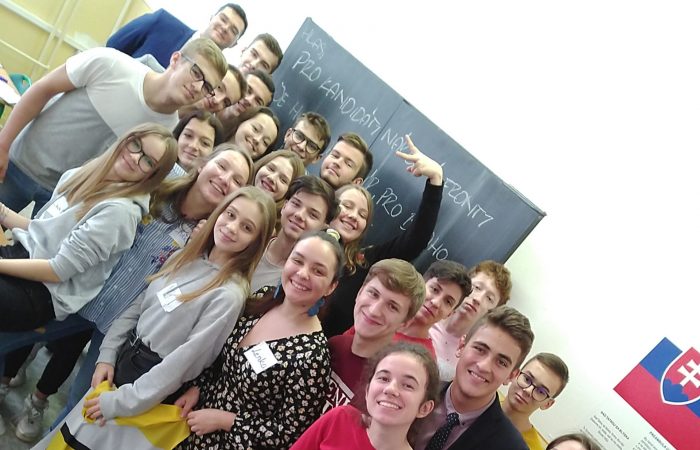
ITG: Teaching the 1948-1989 era in Slovakia
December 22, 2019Thanks to a series of workshops we ran in Slovakia with students and teachers, we have identified more key aspects about students, teachers, and the communist period in Slovakia.
When we work with students, we have to clearly state that we bring a new element into the school environment, and therefore our workshops are well accepted and perceived. We put emphasis on active and cooperative learning, analytical approaches, and the development of personal and social competences.Several key notions have come out of this project’s realization. The first regards information and data. Students are overwhelmed with information that they need to memorize. They are more able to analyze and work with visual sources than they are to name and place figures and events on a timeline. The relates to their analytical and interpretation skills.They have these skills developed, but they need more and more practice.
When we discuss teaching the 1948-1989 era, we have to start with our for teaching. There is so much information that students must remember that teachers don’t have the time to fit in the period of state socialism. They usually don’t teach much on topics after 1945, because it falls at the end of their year plans, and they already have to reckon with numerous cancelled classes throughout the year and field trips at the end. For them, this topic is unreachable. We also identified key notions about teaching. It is fact oriented rather than competences and skills oriented. Teachers have the feeling that they would like to connect history classes more with the present and with more competences, but at the same time, they need to know how to bridge that connection to the past, how to identify the competences, and how to develop them. They need professional development trainings for that, which they lack. Together, we have identified criteria for sources — how to select them, how to prepare them for classroom use. We have also explored together the connections and possible uses of other subjects’ topics, and the relations between them.
When we discussed the topics and content of their classes, it indicated that they teach 1948 as just a seizure of power, 1968 as the promising spring, and August as the invasion that froze society. Then 1989 appears as the peaceful arrival of freedom. Teachers would like to delve deeper into everyday life, ideology, local perspectives, and even memory in order to give more plasticity to the past in their history classes.
Therefore, we believe that for teaching about such a recent past, there needs to be more time and space for history classes. Teachers are also in need of well crafted materials and regular training sessions. Last but not least is the lack of a professional community where they can discuss their teaching and develop and share ideas.
We as a group are looking forward to future developments in all of these aforementioned areas, and we are excited be a part of them.
